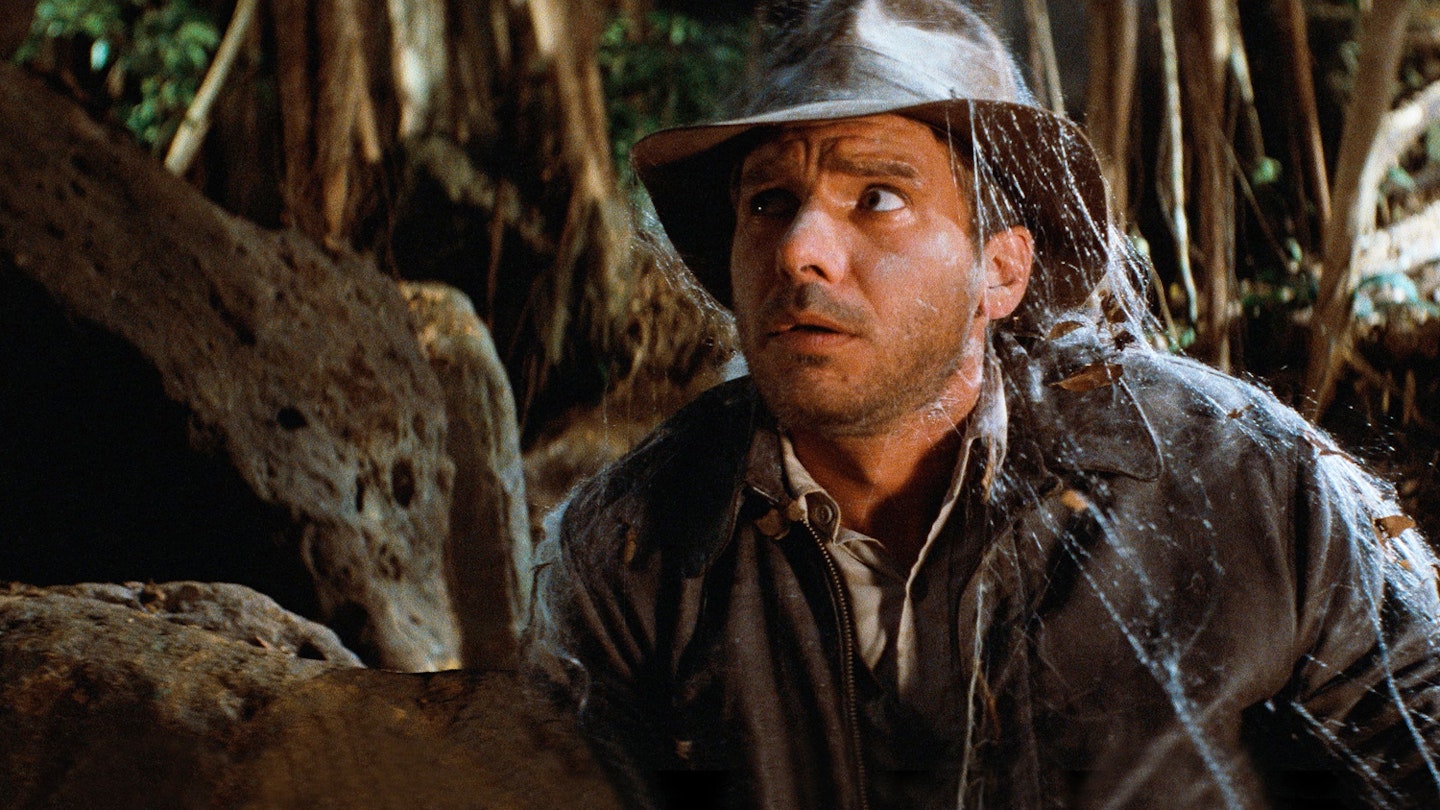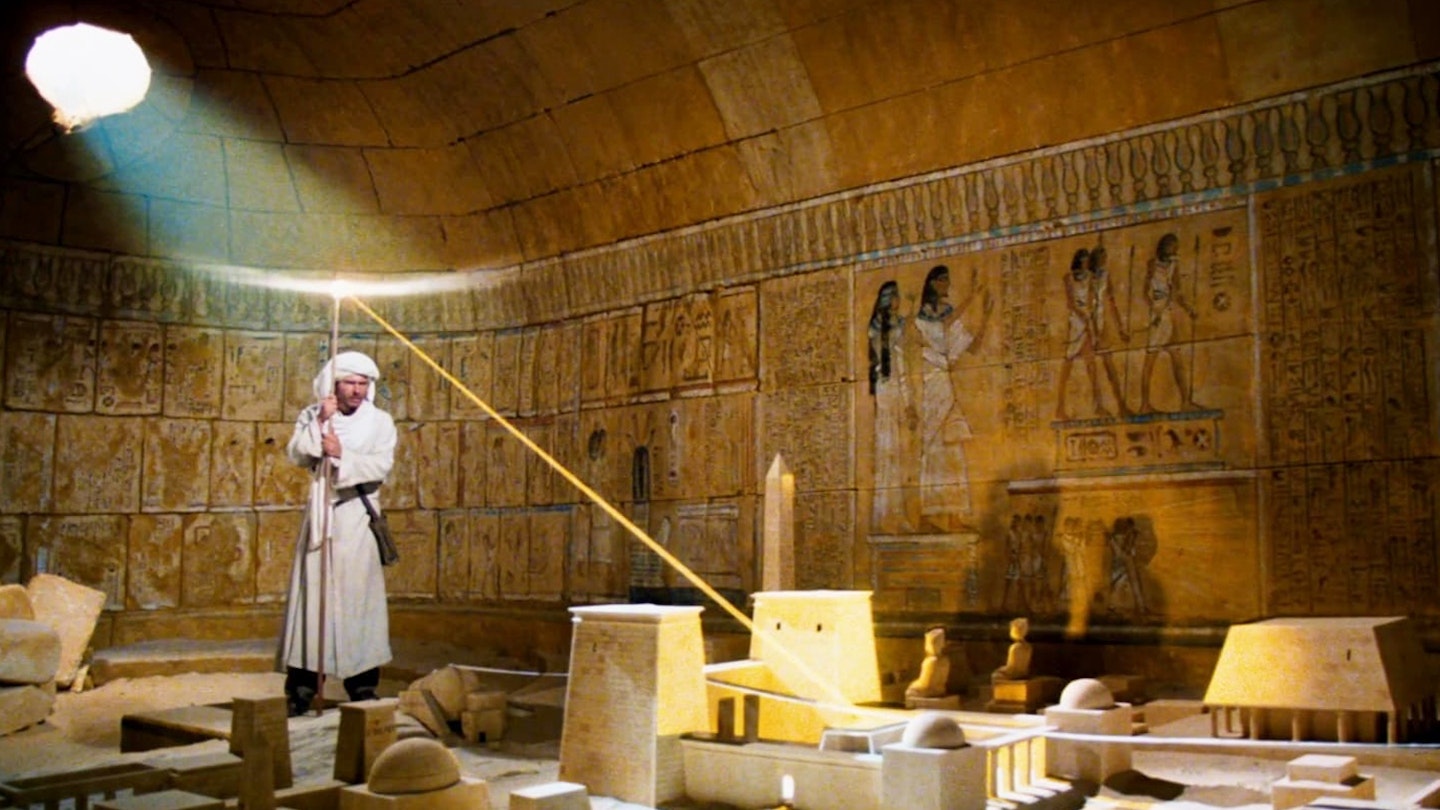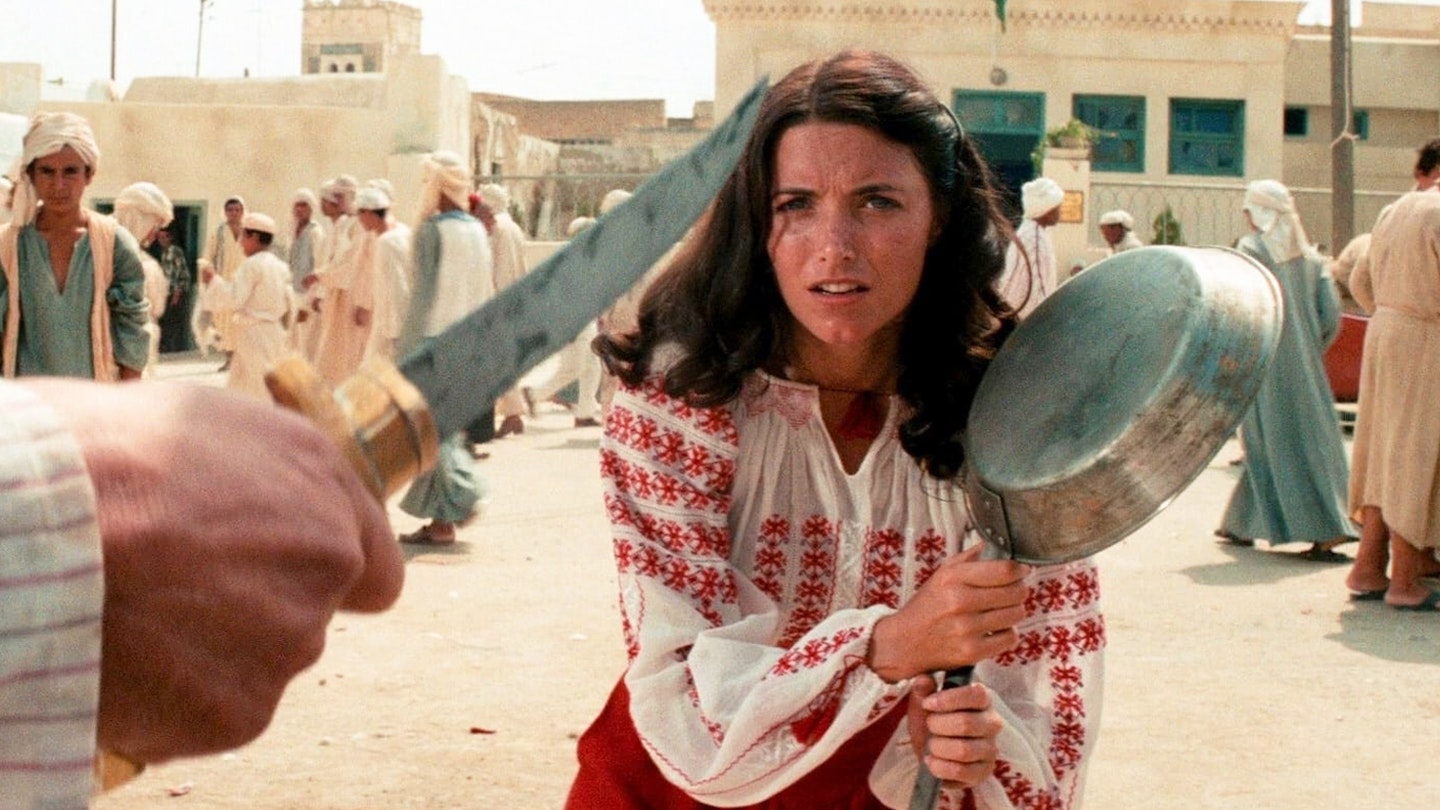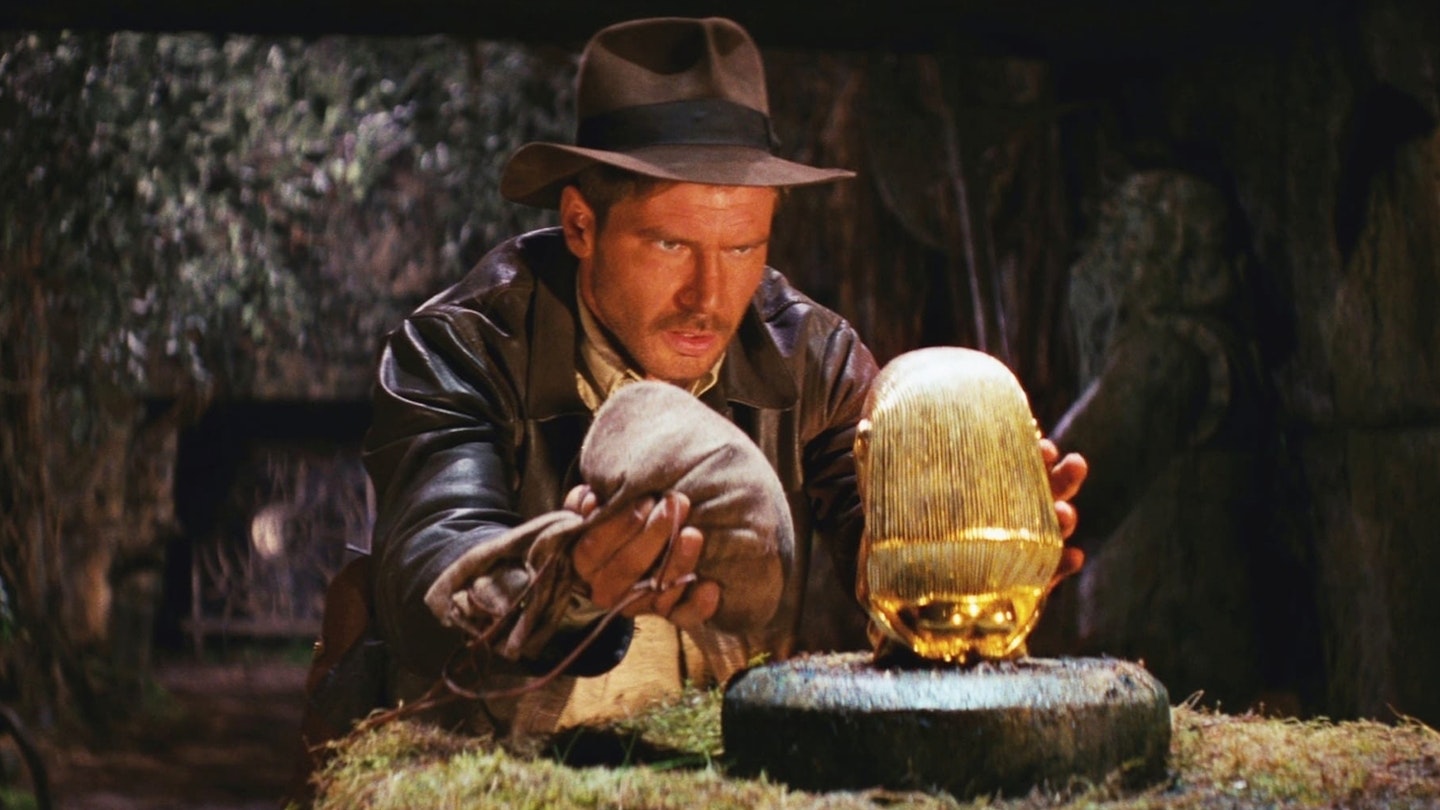Here’s the thing: you can argue for another Indiana Jones film as the archaeologist’s greatest adventure, but then Raiders comes along and outshines it with a light that reduces all who disrespect it to dust. Raiders is a perfect film: if it had flaws (which it does not – see Note 1, below) they’d be like the scar on Harrison Ford’s chin: a flourish to set off the perfection of the rest. If Raiders had a flaw (see Note 2), it would be like the deliberate mistake that master Persian carpet weavers introduce to their intricate patterns so that they don’t challenge God himself. And if this film teaches us anything, it’s that challenging God is not a good idea. The other Indiana Jones films are (mostly) astonishingly great because they’re a lot like Raiders. Raiders is astonishingly great because it is a perfect film.
First and foremost, that’s down to Steven Spielberg. On a rare lull in his career after 1941 (now reclaimed as a misunderstood gem, but that’s another story), Spielberg famously went on holiday with George Lucas and they got talking about the adventure serials of their youth. They wanted to bring back all the excitement and derring-do that they remembered but, crucially, with a proper budget, all-new special effects, and a certain post-New Hollywood sensibility. There’s an edge to Raiders that few of those 1930s originals have, in Toht’s branding and in that horrifying finale. Still, you can feel two masters of blockbuster filmmaking trying to recapture the joys of their boyhoods, which explains the sometimes giddy sense that this was made by kids in a candy shop. But it’s not simply nostalgic. It’s timeless.

Spielberg, with screenwriter Lawrence Kasdan, crafts an astonishingly well-told, economical action film. That James Bond-esque action opener gives us all the Jones trademarks – whip, hat, fear of snakes, nifty way with death traps, a certain idealism combined with a flexible attitude to antiquities law – and a rolling boulder in the first 10 minutes. Its pace never lets up. From the moment Denholm Elliott’s Marcus Brody arrives at Indy’s house, the shift to Tibet takes, what, two minutes? All densely packed with exposition, character and backstory, plus a leather jacket, a whip and a gun. The speed helps to build the tension even during dialogue scenes, because you know that something bad is always just around the corner.
The action that inevitably follows is always terrific. You always know who’s who, what they want, and what’s stopping them from getting it. Moments of iconic action – the boulder, the bar brawl, the glorious truck chase – are leavened with wit and humour. Think about the beat before the stone starts to sink after Indy removes the golden idol and his look of horror; his giant Nazi opponent by the flying wing; the inevitable fact that it’s snakes. It had to be snakes. The bar fight in Marion’s place in Tibet is packed with gags and also genuinely scary. The chase through the Egyptian market may not be (is not) culturally sensitive, but it has Looney Tunes levels of fun and inventiveness. And a Nazi monkey. Eat your heart out, Jeanne Dielmann.

It is also superbly well cast. Spielberg and Lucas didn’t expect their search to lead back to an already established name, but presumably divine intervention revealed the capital-T Truth: it always had to be Harrison Ford. Indy, more than any single role, allowed Ford to display his physicality, his sense of humour and his hangdog charisma. He’s charming in a way that isn’t obvious, because he doesn’t seem to notice the audience (or his students) falling head-over-heels in love with him while his mind is on ancient relics. He cracks quips and whips with equal ease, and yet while he wins individual fights they never seem to bring him closer to his ultimate goals. He doesn’t take home the idol, doesn’t get Marion to hand over the headpiece, doesn’t get to keep the Ark (twice), doesn’t convince Belloq to hand over his hostage. It’s a lesson that certain modern action heroes could do with learning: sometimes it’s OK to be stoppable (looking at you, Fast & Furious). For Indy, this story is one loss after another. But he never gives up, never surrenders. No matter the odds, he keeps trying the next hard thing. It’d strike you as inspirational if you weren’t too busy gasping as he swings under another truck, or picks his way through a pit of snakes to even think about taking a deeper meaning from this film. (The moral of the story? Fear God, punch Nazis. There are worse lessons).
Every swashbuckler needs a plucky Gal Friday, and that was the film’s second great casting coup. Karen Allen never had – maybe never wanted – the career she deserved, but she is luminous, a direct descendant of Barbara Stanwyck, Carole Lombard, Irene Dunne. Funny, fiery and smart as hell, she’s more than a match for Indy, and their chemistry sizzles. The rest are spot on too: Paul Freeman, Ronald Lacey, Elliott, a very young Alfred Molina, even the bastard monkey.

Then there’s the John Williams effect. The story goes that he brought Spielberg two possible themes, and the director picked both. So there’s the triumphal march bit, and the more delicate counterpoint with a soaring sense of possibility. Even so early in their long collaboration director and composer were perfectly simpatico, Williams matching Spielberg’s sense of awe with the Ark’s theme and bringing a delicate, romantic touch to moments like Marion’s Theme. And Douglas Slocombe’s cinematography! From that witty match-cut of the Paramount logo to the final matte, it’s a parade of indelible moments. Deborah Nadoolman’s costumes, Norman Reynolds’ design, Michael Kahn’s editing, and the stunts… there isn’t a weak link.
Howard Hawks once said that a good movie is “three great scenes and no bad ones”. By my non-existent calculations, Raiders has about 90 great scenes and no bad ones, making it an undeniable all-timer. No wonder it’s a five-time Oscar winner, BAFTA winner, and one of those films so significant that it’s added to the US National Film Registry. It’s a great work of art. It belongs in a museum!
Note 1: Like, sure, it looks like they add on one kadam to the Staff Of Ra instead of taking one away as instructed, given that the staff towers over Indy and that he’s not 4’ tall. But I’m sure that has a perfectly good explanation that isn’t just, “it looked cooler like that”. Probably they got a better translation later that told them to add a kadam.
Note 2: Like casting a white man as an Egyptian, or that whole backstory about how Indy and Marion first dated when she was 15 and he was older. Don’t bother me with details.
